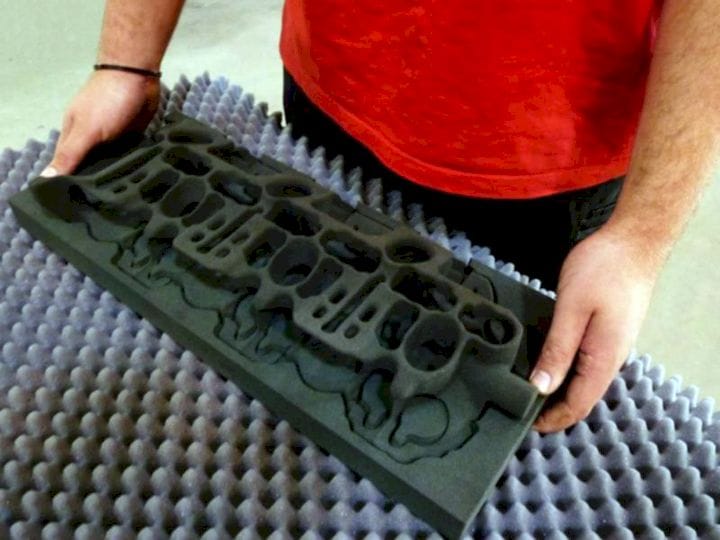![A 3D printed water jacket core mold [Source: voxeljet]](https://fabbaloo.com/wp-content/uploads/2020/05/image-asset_img_5eb0a2ec61ce9.jpg)
VoxelJet announced a very interesting improvement to their light metal casting system with their new VX1000-S 3D printer.
The main target for this improvement is the production of water jacket cores. These are busy molds used to cast highly complex water jacket cores. Water jackets are a kind of wrap around an object through which water flows. By varying the temperature of the water flow, the water jacket can precisely control the temperature of the object.
“Objects” in this case means any arbitrary mechanical shape, and thus water jackets can be of extremely complex design, making them an ideal application for 3D printing. Any complex shape can easily be produced with the layer-by-layer approach of 3D printing technologies.
However, water jackets are typically made from metal, a material not directly printed by voxeljet equipment in this case. Instead the process is to 3D print a complex mold using a special material, then cast liquid metal into the mold.
The improvements made by voxeljet in this case are quite interesting. First, they’ve sped up the process of 3D printing the mold considerably. They say:
“The advanced layering unit and high-speed printhead technology reduce the layer time to 12 seconds, generating a volume output of ca. 54 l/h.”
This specifically addresses the requirement for production use, which should be as efficient as possible. For a five-day-a-week foundry, this means producing as many molds in a day as could have been done in a week previously. That is very significant.
Secondly, voxeljet has improved the chemistry of the casting material so that it is much more friendly in a workshop. They explain:
“The inorganic materials only emit water vapor during the casting process. This significantly improves air quality and working environment in foundries.”
It’s a fascinating engineering puzzle that voxeljet has solved here. They needed to produce a casting material that not only did not emit noxious gases while being subjected to the torturously hot temperatures during metal casting, but at the same time had to ensure the material would successfully print: binder that doesn’t bind particles together would pretty much fail the entire process.
Somehow they managed to identify a curious mix of chemicals to do so, apparently a “liquid binder based on a modified blend of alkali silicates”, and a “solid additive”. And they even managed to speed up the printing at the same time. Impressive!
This sets up a persuasive business case for their sales people when discussing equipment purchases with their foundry clients.
Via BusinessWire and voxelJet











